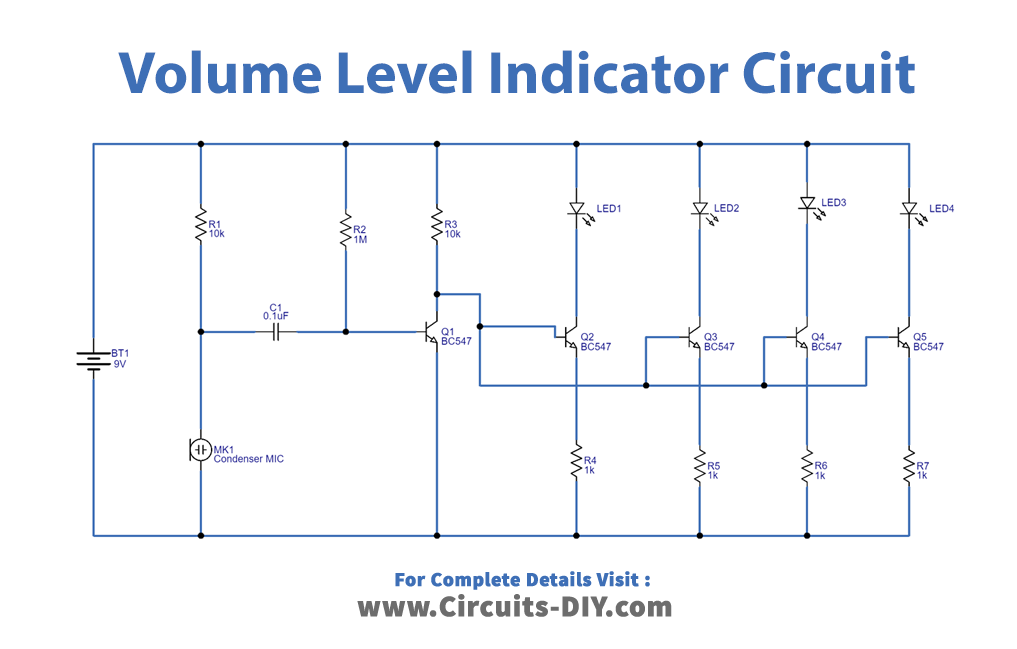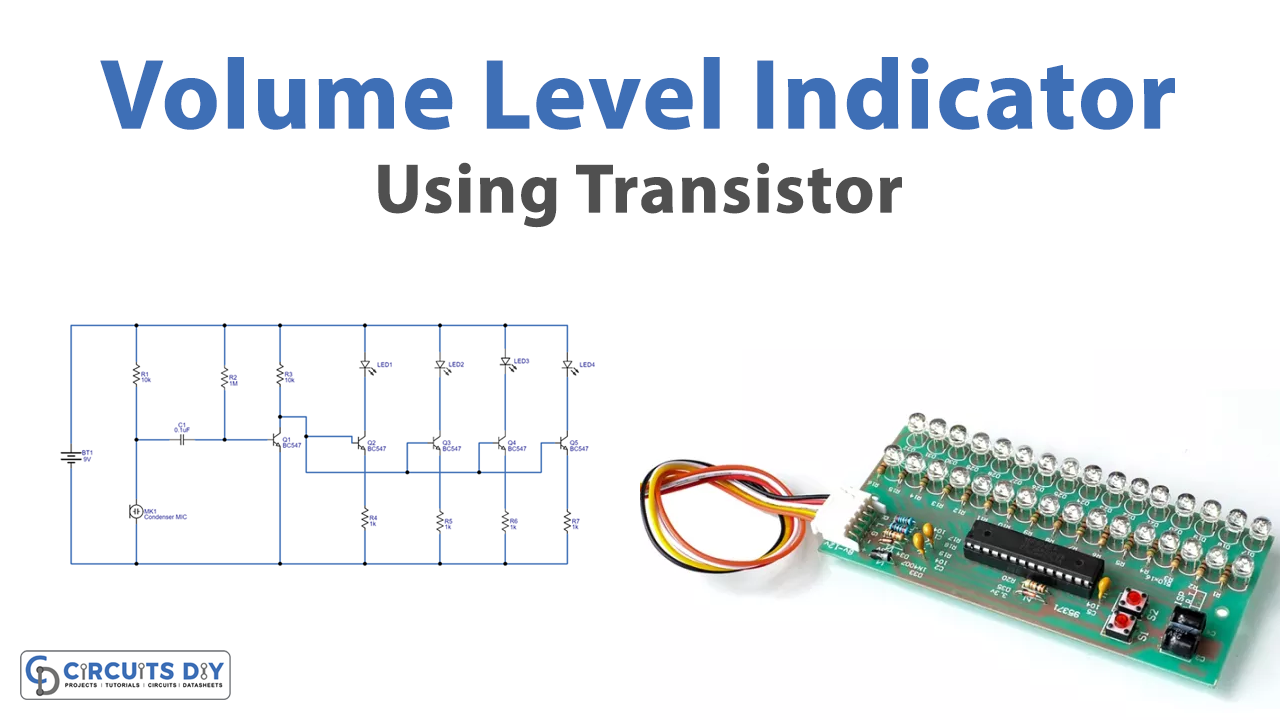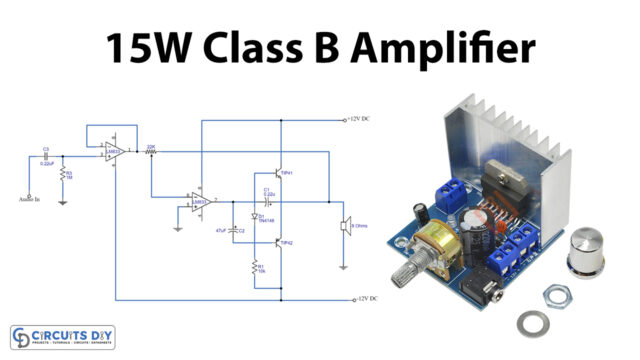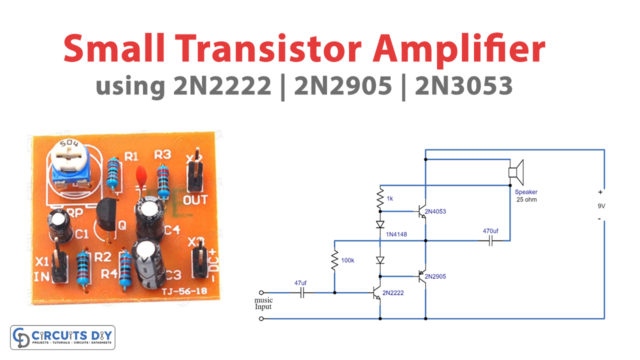Introduction
To measure the intensity of different levels of sound, noise, and music a circuit called a sound or volume indicator is used. The circuit is being utilized in different environmental and industrial applications like VU meters. But the question is why do we need this circuit? The answer is that it determines the signal level to avoid distortion and distortion. And, also to operate the sound recording systems. hence, sound or volume level indicators have wide uses and applications. So, in this tutorial, we are going to “Volume Level Indicator Using Transistor”. The following circuit requires simple electronic elements. For example, The circuit uses the condenser microphone to take the input signal. Also, it uses BC547 transistors that act as a switch.
Hardware Required
| S.no | Component | Value | Qty |
|---|---|---|---|
| 1. | NPN Transistor | BC547 | 5 |
| 2. | Condenser Mic | – | 1 |
| 3. | LED | – | 4 |
| 4. | Ceramic Capacitor | 0.1µF | 1 |
| 5. | Resistor | 1KΩ, 10KΩ, 1MΩ | 4, 2, 1 |
| 6. | Battery | 9V | 1 |
Circuit Diagram

Working Explanation
In this Volume Level Indicator Using Transistor, first, the circuit receives the signal by a condenser mic connected to the circuit. Then this signal is passed to the transistor Q1. Now, this transistor drives the other transistor Q2, Q3, Q4, and Q5 transistors depending on the level of sound each. Thus the respective LEDs turn ON and glow when the connected transistors get a signal. Hence, you can say that transistors are working as a switch.
Application and Uses
- In acoustic measurement instruments.
- To study noise pollution.
- To measure different types of sound like noise, music, etc.
- In volume unit (VU) meters.







